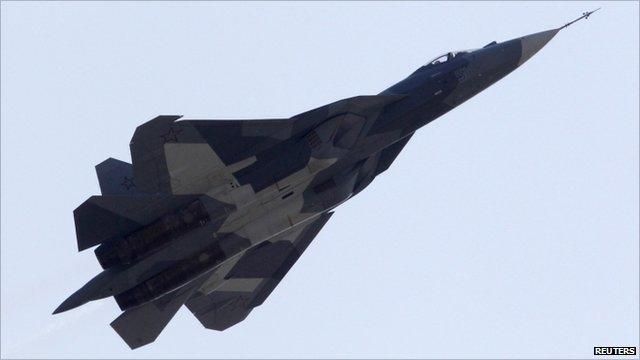Nato sends a message to Russia
- Published
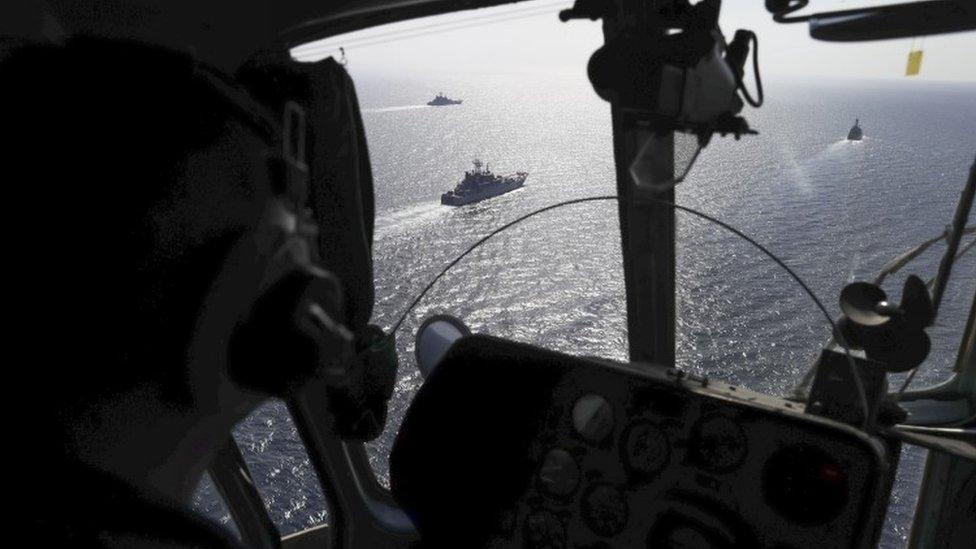
President Putin insists the West has nothing to fear over the manoeuvres of his forces
President Vladimir Putin's assurance that Russia does not plan to attack any other country will not change many minds here at the Nato headquarters in Brussels.
They will simply point to the seizure of the Crimea and the Russian military's continuing support for the rebels in eastern Ukraine as a sure sign of Moscow's growing assertiveness.
Mr Putin also says that the Russian military threat is being exaggerated in the West to justify increased military spending.
Well there is certainly a good deal of hyperbole in some sections of the Western media.
The transit of the small naval task force led by Russia's sole and ageing aircraft carrier - the Admiral Kuznetsov - through the English Channel, for example, sent many British newspapers into a spin.
Not a new Cold War
Frequent stories about the interception of Russian aircraft or Russian submarines all suggest a return to the more uneasy years of the Cold War.
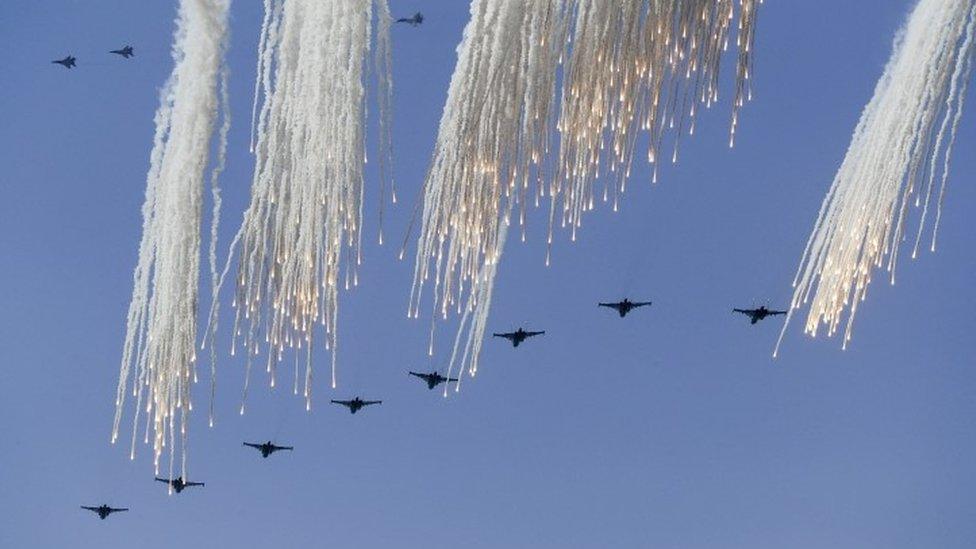
Russia has shown in the recent past that it is sometimes ready to use force in Europe to secure its goals
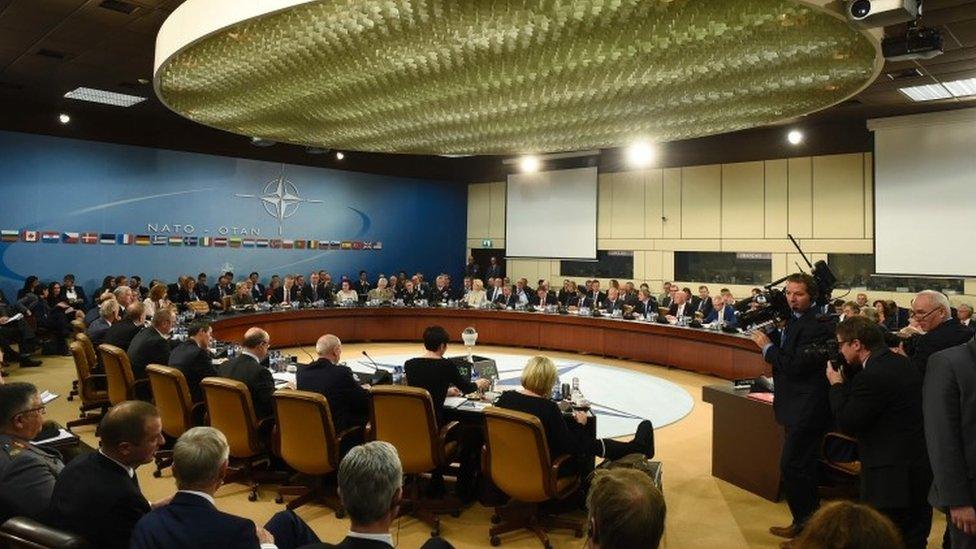
Nato defence chiefs in Brussels want to reassure worried alliance members and send a clear message to Moscow that they can respond to aggression
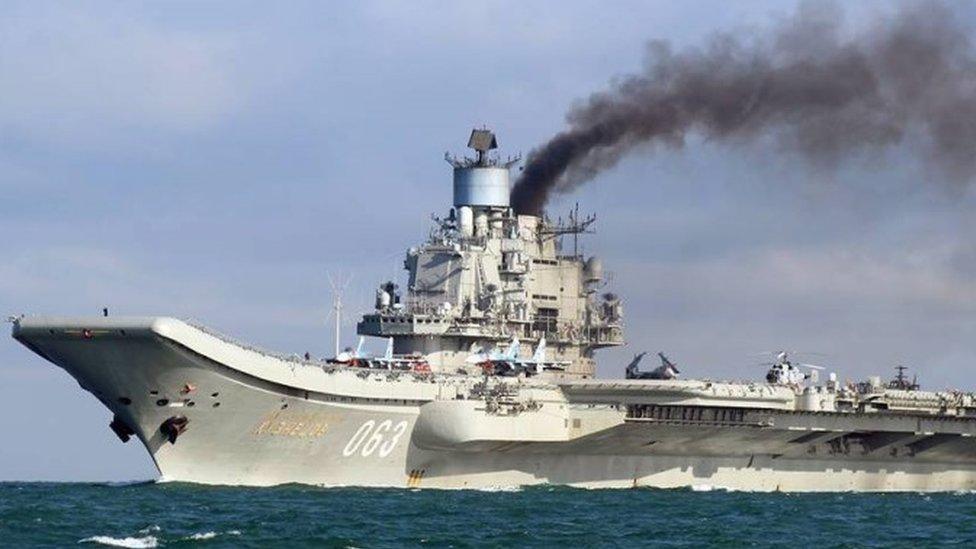
The recent transit of a small naval task force led by the Admiral Kuznetsov (above) through the English Channel sent many British newspapers into a spin
The simple fact is that this is not a Cold War Mark II - far from it. Russia with its declining economy is nothing like the Soviet Union, which aspired to establish a different world order to that pursued by the capitalist West.
Russia is in many ways a weak country. Its leadership has a strong sense of encirclement - a view that the West is only eager to do it down - and, rightly or wrongly, this is driving Mr Putin's more assertive approach.
That is what is making Nato allies like the three Baltic Republics and Poland so worried. That is why countries like Romania and Bulgaria worry about Russia's behaviour in the Black Sea region.
And that is why Nato has sought to provide visible and highly symbolic reinforcements to its northern and south-eastern flanks.
Hard times
But Nato has to square a circle here. Despite Mr Putin's barbs, there is no great enthusiasm for a new conventional arms race.

Nato says it is responding to the threat posed by Russia through deterrence
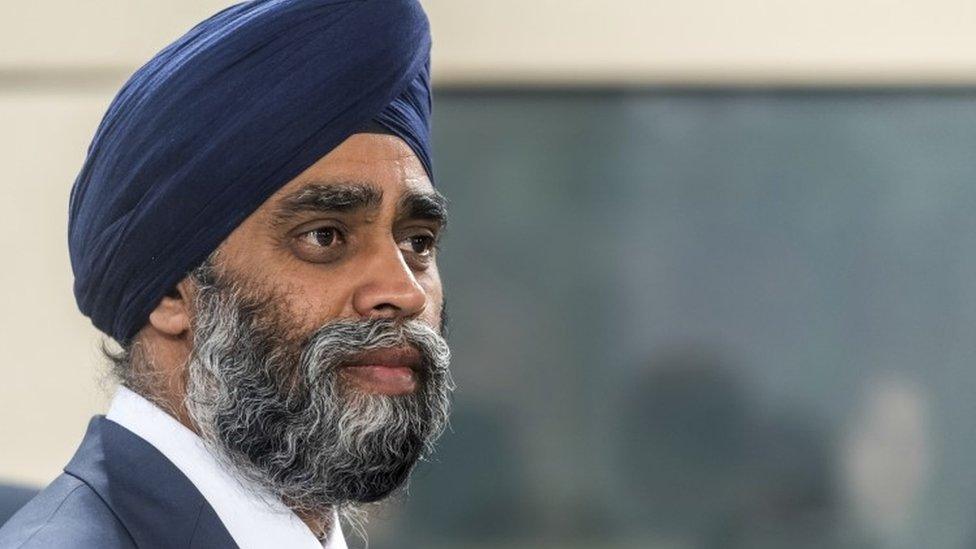
Canadian Defence Minister Harjit Singh Sajjan argues the Nato alliance is coming together and operating with greater cohesion
The economies of the European allies, for a start, are generally not in great shape. Indeed Europe is distracted by the migrant crisis sweeping in from the Middle East and the self-inflicted drama of Britain's planned exit from the EU.
So the problem here in Brussels has been to do enough both to reassure worried Nato members and to send a clear message of deterrence towards Moscow.
The Americans are sending a heavy armoured brigade to western Europe, bringing the total number of US Brigade combat teams on the continent to three.
The new brigade will initially go to Poland and then elements will deploy to Romania, Bulgaria and the three Baltic republics. Equipment for a further US brigade will be pre-deployed in Europe.
But the whole point of sending a signal of deterrence is not that the US shoulders all of the burden but that as many Nato countries as possible are involved.
Still in business
The method of doing this is by the deployment of four multi-national battalions - one to each of the Baltic republics and the other to Poland. Each of these units will be about 1,000 strong, comprising in most cases mechanised infantry, with a few supporting arms.
The UK, for example, will lead the battalion going to Estonia.
It will have Warrior armoured fighting vehicles, a small number of tanks and additional companies of French and Danish troops.
The US will lead the battalion going to Poland, along with a small number of British and Romanian soldiers. Canada and Germany will lead the remaining two battalions again with small additions to give them a multi-national character.
Canada's Minister of National Defence, Harjit Sajjan, told me his country would be commanding the battalion going to Latvia.
In his view, the deployment of these multi-national units early next year demonstrates the alliance "coming together, showing the ability to operate together and greater cohesion".
"It is", he said, "an open and transparent message of deterrence."
But the reassurance effort is not just northwards. Canada will be participating in a new air policing operation in the south-east - probably based out of Romania - and a Canadian warship will also be despatched to the Black Sea to help provide an enhanced Nato presence.
But I put it to him that in practice these are very small forces. Enhanced battalions are surely not going to impress Moscow? Not surprisingly the Canadian defence minister disagreed, insisting that the multi-national model sent "a very strong message to Russia".
Nato is taking small military steps to underline to Moscow that it still is very much in business and that despite all the clouds on Europe's horizons it can make decisions swiftly and deploy forces accordingly.
Of course, there is political and military theatre in all of this.
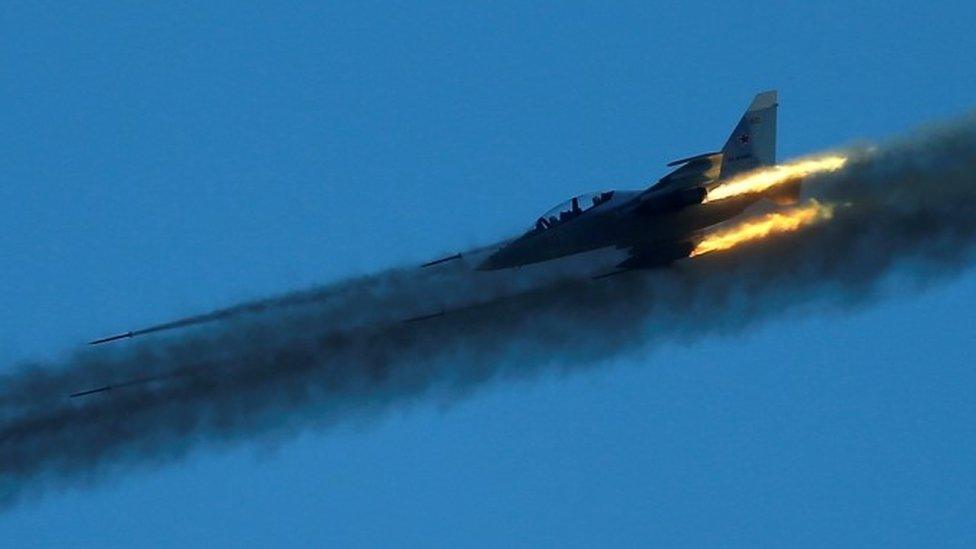
This is not a Cold War Mark II but it is a sign of an increasingly assertive Russia
Are Russian tank armies ready to sweep westwards, as they were at the height of the Cold War? Probably not.
But is Russia ready to use force in Europe, where it can to secure its goals? Most certainly.
Countries like Georgia and Ukraine still have far more to fear from Moscow than Nato.
But the alliance's security rests upon meaningful guarantees that its member states are all in it together, both in good and bad times.
This week has been about consolidating and underlining those guarantees - the message to Moscow is clear.
- Published27 October 2016
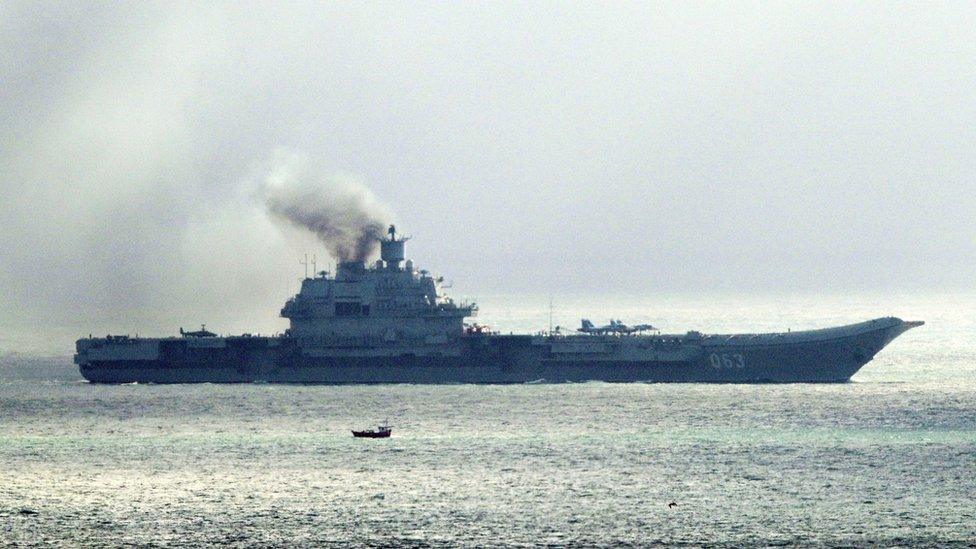
- Published17 October 2016
- Published13 October 2016

- Published30 September 2016
- Published25 September 2016
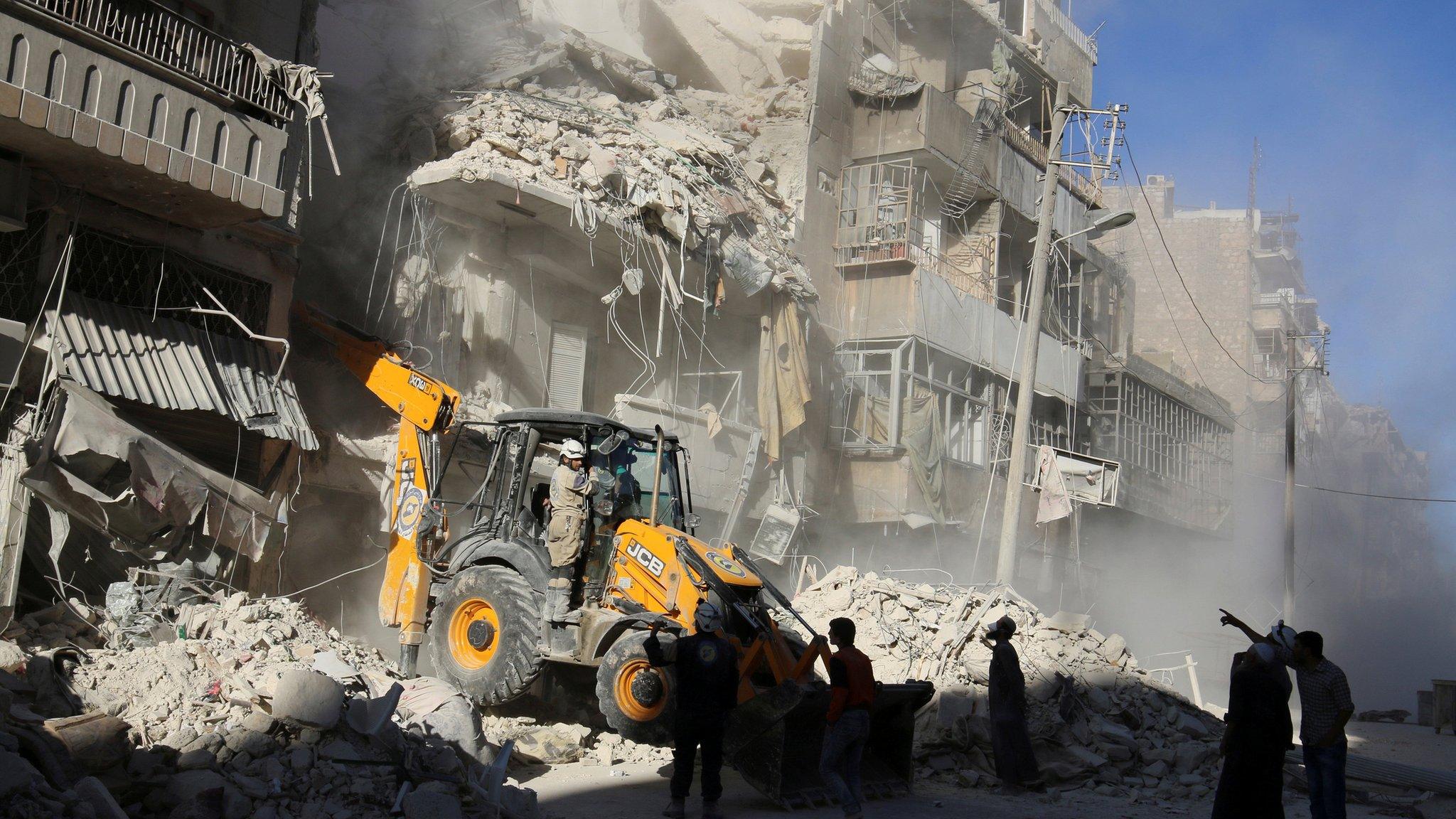
- Published14 September 2016

- Published6 February 2015
